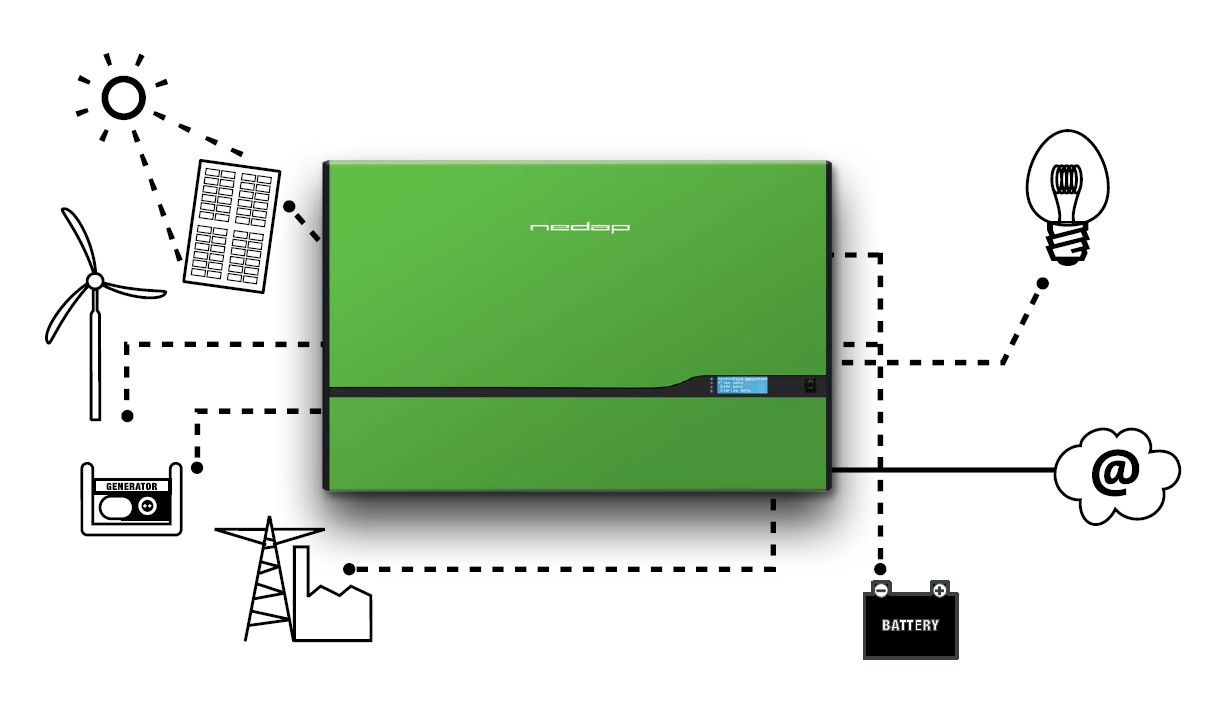Across Australia most new solar installations are subject to tariffs which pay the owners as little as 1/4 or less for their excess power that they export to the grid during the day than they are charged for using the same power through the evening hours.
Installing a battery system in your home allows you to instead store this excess electricity and use it yourself, avoiding the high tariffs.
Components for solar storage systems
- PV Solar Panels – per a traditional system, roof mounted panels generate DC electricity
- Inverter – converts DC electricity from the panels into AC that is either used in the home by appliances or fed back into the grid
- Charge Controller – controls charging of the batteries. DC power from the solar panels is sent to the batteries whilst they are below capacity.
- Batteries – used to store the excess power generated by the solar panels.
Battery Technologies
The three most commonly used battery chemistries for residential energy storage are Lead Acid, Lithium-Ion and Lithium Iron Phosphate.
| Battery Chemistry | Characteristics |
|---|---|
| Lead Acid |
|
| Lithium Ion |
|
| Lithium Iron Phosphate (LiFePO4) |
|
Battery / Energy Storage System Manufacturers
A number of systems as listed below are already available on the Australian market which can be purchased and installed today.
These products commonly include some or all of the components required to provide fully automated local energy storage solution.
| Manufacturer | Battery Chemistry | Product details |
|---|---|---|
| Neeo System | Lithium-ion |
|
| Samsung SDI – ESS | Lithium-Ion |
|
| Nedap – PowerRouter | Lead Acid & Lithium-ion options |
|
| Magellan Power – Residential Energy Storage | Lithium Iron Phosphate |
|
| Bosch | Lithium-ion |
|
| BYD – Dess | Lithium Iron Phosphate |
|
| Selectronic – myGrid | Lead Acid |
|
| BenQ Solar – PowerLegato | Lithium ion |
|
| CMS Group | Lead Acid |
|
| Redflow | Zinc Bromine |
|
| Enphase | Lithium Iron Phosphate |
|
| Zen Energy Systems | Lithium Iron Phosphate |
|
| Sunverge / Sunpower | - |
|
Installers
| Company | Location | Battery Technology Supported |
|---|---|---|
| Aussie Solar | Sydney, NSW | CMS Group |
| Solar Australia | Regional NSW | Selectronic, BYD |
| Lumenaus | VIC | Nedap PowerRouter |
| Going Solar | VIC | Selectronic |
| Dynamic Solar | Central West NSW | Bosch, Magellan Power |
| The Greenpower Company | VIC | Selectronic |
| The Sun Works | Southeast QLD | Enphase, Samsun, PowerLegato, Bosch |
| All Energy HQ | QLD | BYD |
Online retailers
| Company | Location | Battery Technologies Sold |
|---|---|---|
| Apollo Energy | Australia Wide | Bosch, AUO PowerLegato |
| Sunergy | VIC | Nedap PowerRouter, Selectronic |
Economics
Grid connected solar + storage makes economic sense (being a commercial return on investment) for some niche cases now and without doubt will do for the broader market within the next 10 years.
For households that installed solar whilst feed in tariffs were at or above current peak usage tariffs it’s unlikely to make sense to install storage yet. All feed in tariffs were time limited and most run out within 2 years from now. By this time the battery cost will have come down, the supply side of the market will have improved and it will be a good time to consider installing local storage.
Just as solar panels have experienced rapid cost reductions over the last 5-10 years, the consensus is that battery prices will see similar declines.
For households installing a new solar PV system now or who are on feed in tariffs well below their usage tariffs – solar may already be viable.
Regulation & Electricity Companies
To date there has been limited reaction from the power companies to consumers installing local energy storage systems. The adoption levels to date are very very low and so the lack of reaction is not surprising.
As has been widely reported the rapid adoption of solar is causing enormous amounts of very rapid change in an industry that is accustomed to the opposite. As consumers we have grown used to a very reliable supply of electricity, delivering this requires very rigid control of the networks, extensive levels of redundancies and great deal of forward looking long term planning.
There is already discussion of a shift in the weighting from usage based to fixed monthly access charges and it should not be assumed that such changes won’t occur in future.
Solar Hot Water
Whilst perhaps not immediately obvious, solar hot water already offers the opportunity for grid connected energy storage. It is well entrenched and highly unlikely to be effected by tariff changes in future. It should be a starting point for users wanting to install local storage.



Respond to Grid Connected Solar plus Storage